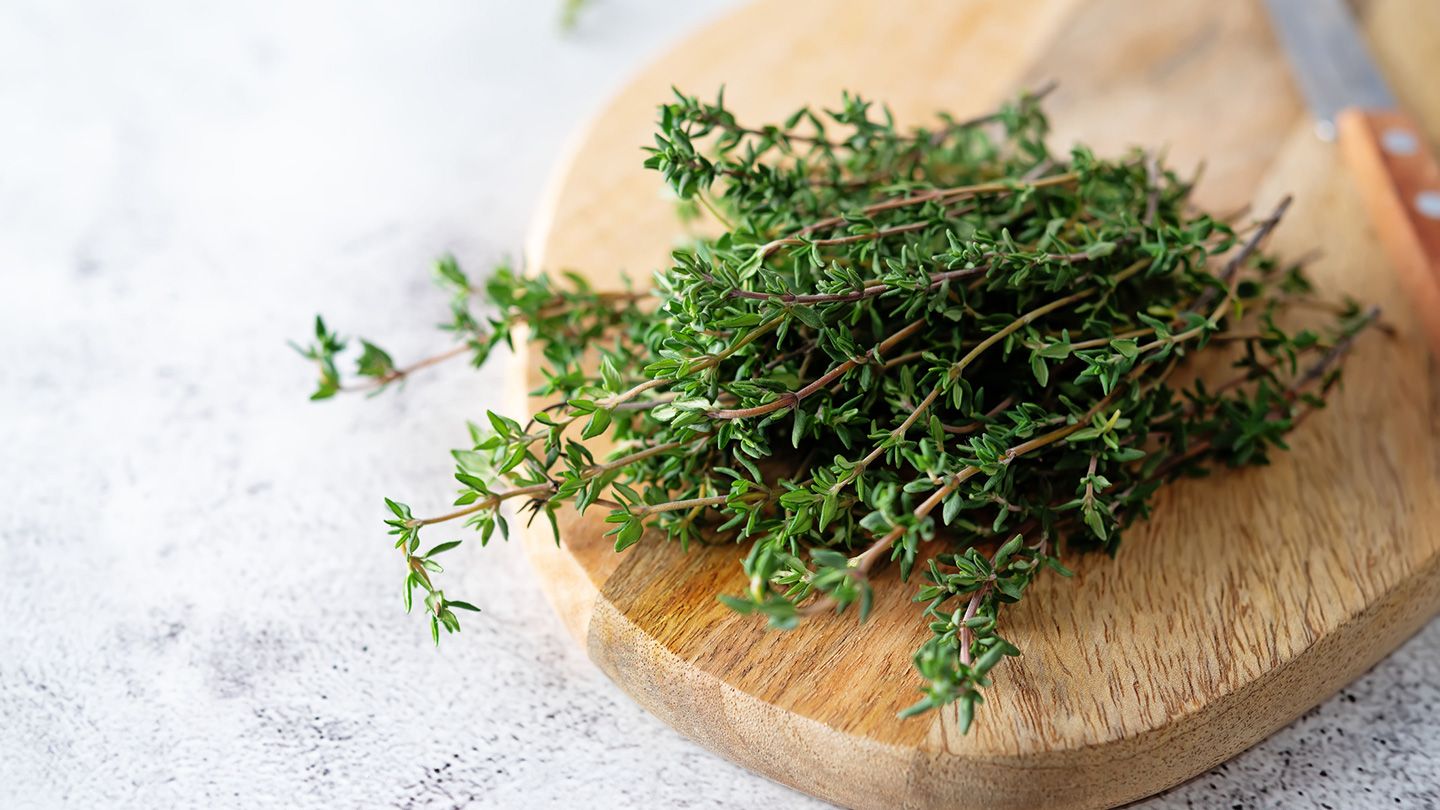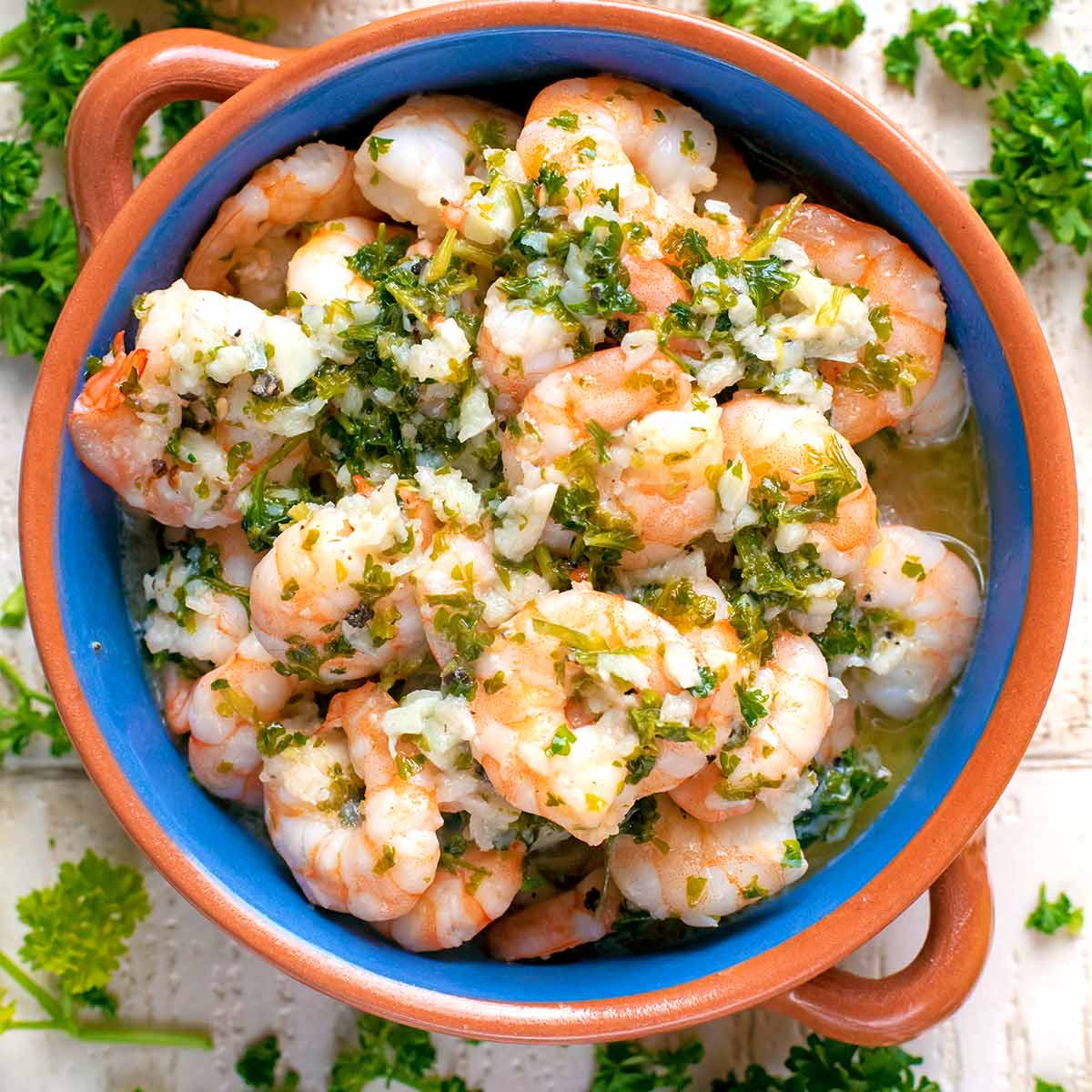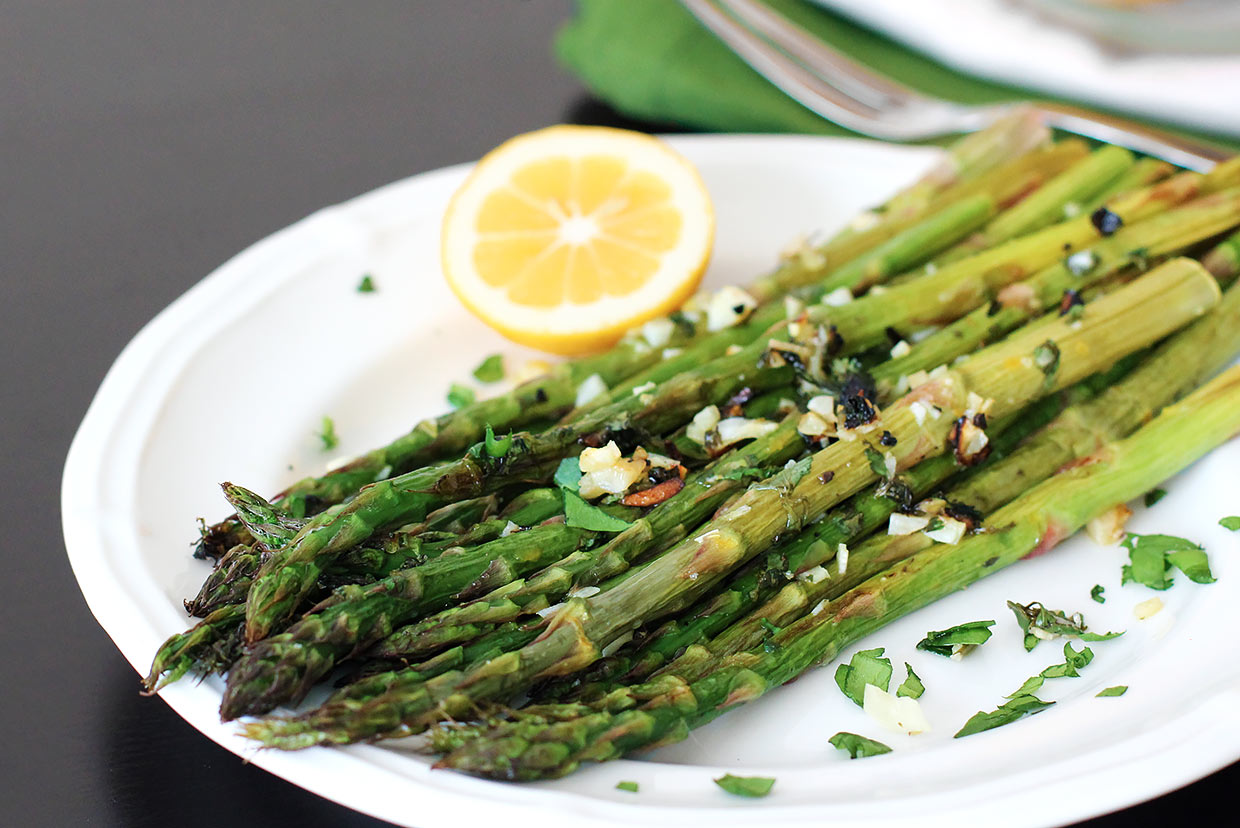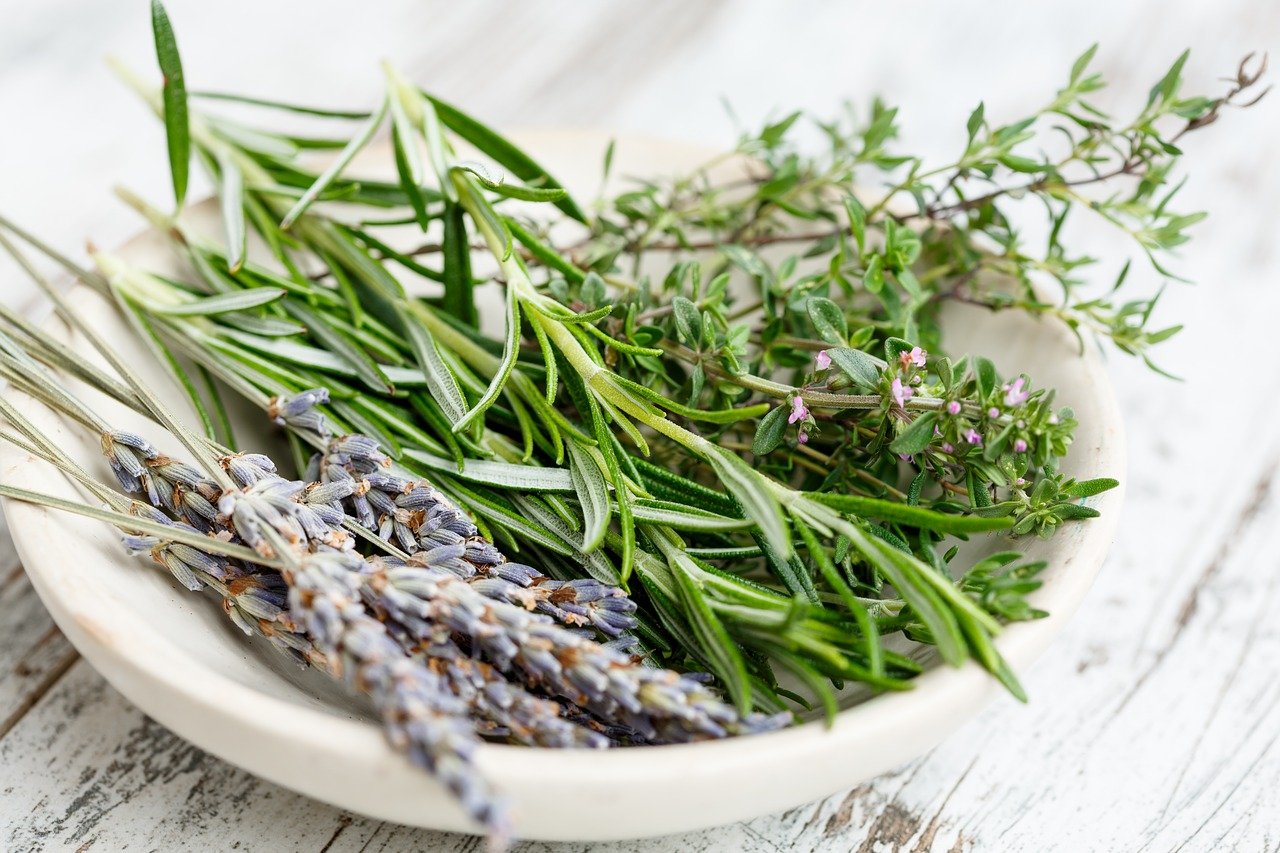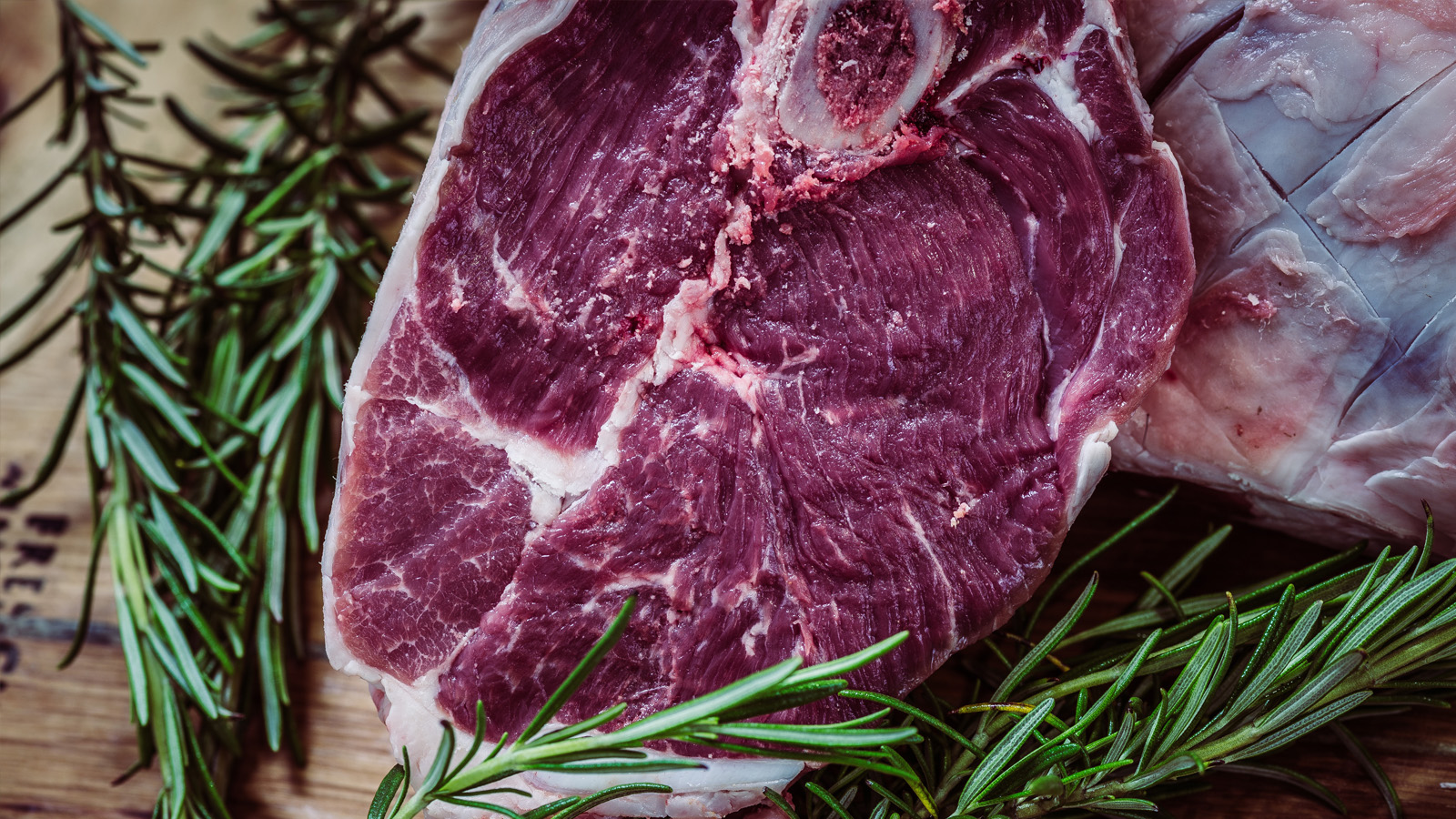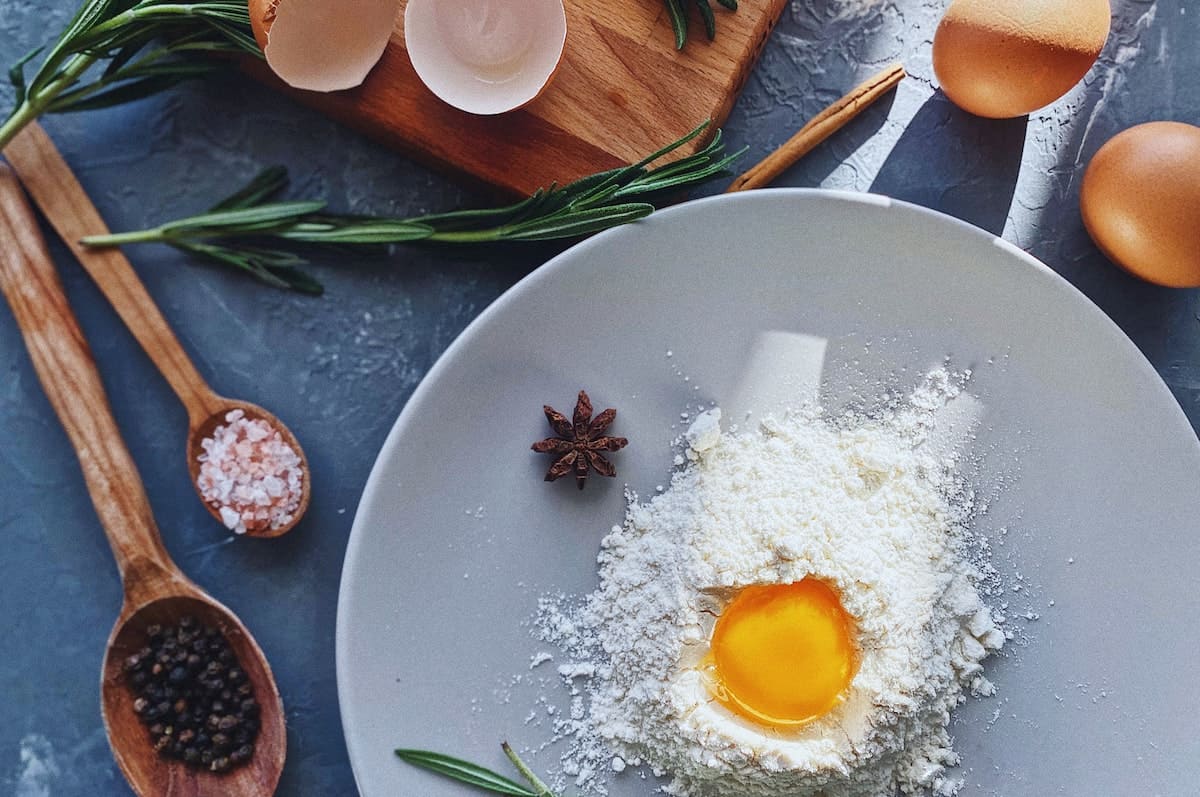Home>Gardening News and Trends>Gardening Trends>What Herbs Go Good With Pork


Gardening Trends
What Herbs Go Good With Pork
Modified: January 27, 2024
Discover the latest gardening trends and find out which herbs pair perfectly with pork for delicious meals. Enhance your cooking experience with these flavorful combinations.
(Many of the links in this article redirect to a specific reviewed product. Your purchase of these products through affiliate links helps to generate commission for Chicagolandgardening.com, at no extra cost. Learn more)
Table of Contents
Introduction
Welcome to the flavorful world of herbs and spices that perfectly complement pork dishes. Whether you’re grilling, roasting, or stewing, finding the right combination of herbs can elevate the taste of your pork to new heights. Not only do herbs add depth and complexity to your recipes, but they also offer a range of health benefits.
Herbs not only enhance the taste of pork but also provide a wonderful fragrance that tantalizes the senses. The aroma of herbs gently infuses the meat as it cooks, creating a mouthwatering experience. So, if you’re a fan of pork and love experimenting with different flavors, it’s time to explore the herb garden and discover the perfect pairing for your next pork dish.
In this article, we will explore a variety of herbs that go well with pork, providing both flavor and texture to your dishes. From the classic choices to some lesser-known gems, you’ll have plenty of options to take your pork recipes to the next level. Let’s dive into the world of aromatic herbs and discover how they can awaken your taste buds.
Rosemary
Rosemary is a versatile herb that pairs exceptionally well with pork. Its robust flavor and woody aroma make it a popular choice for enhancing the taste of various pork dishes. The needle-like leaves of the rosemary plant offer a distinctive flavor – slightly piney and peppery with hints of citrus.
When cooking pork, rosemary can be used in various forms. Fresh rosemary sprigs can be added to a marinade or simply scattered over meat before roasting or grilling. The woody stems can also be used as skewers to infuse the pork with intense flavor.
Not only does rosemary add a delightful taste, but it also complements the richness of pork by cutting through the fattiness and adding a refreshing note. Its flavor pairs well with different cuts of pork, from pork chops to tenderloins and roasts.
When using rosemary, it’s essential to finely chop the leaves or strip them from the stem before incorporating them into your recipes. This helps release the aromatic oils and flavors more effectively. Aside from its flavor, rosemary is also praised for its health benefits. It has anti-inflammatory properties and is rich in antioxidants, making it a wonderful addition to your pork dishes.
Try combining rosemary with garlic, olive oil, and a touch of lemon juice to create a simple marinade for pork chops. You can also use rosemary in dry rubs, along with other spices like paprika and black pepper, to impart a robust and flavorful crust on your roasted pork loin.
Sage
Sage is another herb that pairs exceptionally well with pork, offering a unique and earthy flavor profile. With its distinctively velvety leaves and strong aroma, sage adds a touch of warmth and depth to pork dishes.
Known for its versatility, sage can be used in various ways when cooking pork. Fresh sage leaves can be chopped and added to marinades, stuffings, or sauces. It can also be used as a flavorful garnish, adding an extra layer of flavor to your dish.
One of the classic pork dishes that benefit greatly from the addition of sage is the famous Italian dish, Saltimbocca. Traditionally made with veal, this dish can be easily adapted for pork. Wrapping thin slices of pork tenderloin with prosciutto and sage leaves not only adds incredible flavor but also helps keep the meat moist during cooking.
When using sage, it’s important to avoid overpowering the dish, as its flavor can be quite intense. A little goes a long way, so using just a few leaves or a pinch of dried sage is often enough to impart its distinctive taste. Sage pairs well with other herbs like rosemary and thyme, creating a balance of flavors that complements pork beautifully.
In addition to its flavor, sage offers several health benefits. It is known for its antioxidant and anti-inflammatory properties, as well as its ability to aid digestion. So, besides enhancing the taste of your pork dishes, sage can contribute to your overall well-being.
Next time you’re cooking pork, consider incorporating sage into your recipes. Whether it’s a simple herb rub for pork chops, a flavorful filling for pork roulades, or a fragrant sauce for roasted pork tenderloin, sage will add a delightful and aromatic touch to your dish.
Thyme
Thyme is a versatile and aromatic herb that pairs beautifully with pork. With its earthy and slightly minty flavor, thyme adds depth and complexity to a wide variety of pork dishes.
There are several varieties of thyme available, but the most commonly used for cooking is the common thyme or Thymus vulgaris. The small leaves of thyme are packed with flavor and can be used either fresh or dried.
When cooking pork, thyme can be used in marinades, rubs, and even sauces. Its subtle yet distinct flavor adds a unique dimension to the meat, while its aroma permeates the dish, tantalizing the senses.
One of the classic ways to use thyme with pork is by combining it with other herbs like rosemary and sage. This trio of herbs creates a flavor profile that perfectly complements the richness of pork. Whether you’re roasting a pork loin, grilling pork chops, or simmering a pork stew, the addition of thyme will enhance the overall taste and bring out the best in your dish.
In addition to its culinary benefits, thyme also offers a range of health benefits. It is rich in vitamins and minerals, including vitamins A and C, iron, and manganese. Thyme is also known for its antibacterial and antioxidant properties, making it a valuable addition to your pork recipes.
When using thyme, it’s important to remove the leaves from the stem before incorporating them into your dishes. The small leaves can be finely chopped or added whole, depending on your preference. Remember that thyme can be quite potent, so a little goes a long way.
Next time you’re cooking pork, don’t forget to reach for a sprig of thyme. Whether you’re making a roast, a stew, or even a simple grilled pork chop, the addition of thyme will elevate the flavors and take your dish to a new level of deliciousness.
Garlic
Garlic is a culinary superstar that adds undeniable flavor and aroma to numerous dishes, including pork. With its pungent and distinct taste, garlic is a versatile herb that can elevate the flavor of pork to new heights.
When it comes to pork, garlic can be used in various forms. Fresh garlic cloves can be minced, crushed, or sliced, depending on the desired intensity of flavor. You can infuse the pork with garlic by rubbing it directly onto the meat, incorporating it into a marinade, or adding it to sauces and gravies.
The combination of garlic and pork is a match made in culinary heaven. Garlic enhances the natural flavors of pork, adding depth and complexity. It works particularly well with roasted or grilled pork, as the high heat brings out the sweetness and richness of both the meat and the garlic.
Garlic is not only prized for its robust flavor but also renowned for its numerous health benefits. It contains compounds that have been shown to boost the immune system, improve heart health, and reduce inflammation.
In addition to its taste and health benefits, garlic is incredibly versatile in the kitchen. It pairs well with a wide range of herbs and spices, making it a great addition to different pork recipes. Whether you’re making garlic and herb-roasted pork tenderloin, garlic-infused pulled pork, or garlic-marinated pork kebabs, the addition of garlic will enhance the overall flavor profile and leave your taste buds craving for more.
It’s important to note that garlic can easily burn, so make sure to monitor its cooking time and temperature carefully. Burnt garlic can impart a bitter taste to your dish, so aim for a golden-brown color when sautéing or roasting garlic.
No matter how you choose to use it, garlic is a must-have herb in any kitchen. Its bold flavor and health benefits make it a perfect companion for pork, adding a depth of flavor that will take your pork dishes from ordinary to extraordinary.
Bay Leaves
Bay leaves are a staple herb in many cuisines and are an excellent addition to pork dishes. These aromatic leaves add a subtle yet distinctive flavor to the meat, enhancing its taste and fragrance.
Bay leaves are commonly used in braised or slow-cooked pork recipes, where they release their flavors slowly, infusing the dish with their unique essence. These leaves have a slightly floral and herbal taste with hints of bitterness, which pairs well with the richness of pork.
When using bay leaves, it’s important to remember that they are not meant to be eaten. Instead, they are added to recipes during the cooking process and removed before serving. The whole leaves can be added to stews, soups, roasts, and even marinades to impart their flavors.
Bay leaves are known for their ability to enhance the overall flavor profile of a dish. They can help balance the richness of pork by adding a subtle complexity and depth. The flavors of bay leaves develop best when cooked for longer durations, so they are ideal for slow-cooked pork dishes like braised pork shoulder or hearty stews.
In addition to their flavor-enhancing properties, bay leaves have been used for their medicinal benefits for centuries. They are believed to aid digestion, relieve respiratory conditions, and have anti-inflammatory properties.
When using bay leaves, it’s best to use them sparingly, as their flavors can be quite potent. One or two leaves are often enough to add depth to a dish, depending on its size and cooking time. To release their flavors more efficiently, it’s recommended to crush the bay leaves before adding them to your recipes.
Next time you’re cooking pork, consider using bay leaves to add an extra layer of flavor. Whether you’re making a comforting pork stew or a tender roast, the addition of bay leaves will elevate the taste and make your dish truly memorable.
Paprika
Paprika is a vibrant and flavorful spice that can bring a burst of color and taste to your pork dishes. Made from ground peppers, paprika adds a mild, sweet, and slightly smoky flavor to pork, enhancing its overall depth and complexity.
There are different varieties of paprika available, ranging from sweet to hot. The choice of paprika depends on your personal preference and the level of heat you desire in your dish. Sweet paprika is the most commonly used type in pork recipes.
Paprika can be used in various ways when cooking pork. It can be incorporated into spice rubs, marinades, and sauces, or sprinkled directly over pork before cooking. The spice adds not only incredible flavor but also a vibrant red hue, making your pork dishes visually appealing.
When using paprika, it’s important to be mindful of its sensitivity to heat. Paprika can burn easily, resulting in a bitter taste. To prevent this, it’s best to add paprika to the dish early in the cooking process or mix it with oil or other wet ingredients before applying it to the meat.
Paprika not only adds flavor but also offers several health benefits. It contains antioxidants and vitamins, such as vitamin C, which can support immune health and provide a boost of nutrition to your pork dishes.
There are endless possibilities when it comes to using paprika in your pork recipes. You can create a simple and flavorful spice rub for pork chops by combining paprika with other spices like garlic powder, onion powder, and black pepper. Or, use paprika as a base for a marinade for ribs, pork tenderloin, or even pulled pork.
Whether you’re grilling, roasting, or stewing pork, don’t forget to incorporate the warm and smoky flavors of paprika. It will add a delightful twist to your pork dishes, making them stand out and leaving your taste buds satisfied.
Fennel Seeds
Fennel seeds are a flavorful and aromatic herb that can enhance the taste of pork dishes. With their unique licorice-like flavor and subtle sweetness, fennel seeds add a delightful twist to pork recipes, creating a harmonious balance of flavors.
Fennel seeds can be used in both whole and ground form. When using whole fennel seeds, they can be toasted and crushed to release their flavors before adding them to your dishes. Ground fennel seeds can be used as a spice rub or added directly to marinades and sauces.
One popular way to incorporate fennel seeds into pork dishes is by using them in a dry rub or marinade for pork tenderloins or chops. The earthy and slightly sweet flavor of fennel seeds complements the richness of the pork, creating a delicious blend of tastes. Fennel seeds also pair well with other herbs like thyme, rosemary, and sage, enhancing the overall flavor profile of the dish.
In addition to its culinary benefits, fennel seeds are known for their potential health benefits. They have been used traditionally to aid digestion, reduce inflammation, and soothe gastrointestinal discomfort.
When using fennel seeds, it’s important to crush them or grind them just before using to maximize their flavors. This helps release the essential oils and intensify the taste. Additionally, fennel seeds should be used in moderation, as their flavor can be quite strong.
Fennel seeds can be a versatile addition to your pork dishes. Whether you’re making a roast, braised pork, or even sausages, fennel seeds can take your recipes to the next level. The unique taste and aroma they bring will surely impress your taste buds and create a memorable dining experience.
Mustard Seeds
Mustard seeds are a powerful and versatile spice that can add a distinctive flavor profile to your pork dishes. Known for their pungency and tanginess, mustard seeds can enhance the taste and give a delightful kick to a wide range of pork recipes.
There are different types of mustard seeds available, including yellow, brown, and black varieties. The choice of mustard seeds can vary depending on the desired level of heat and flavor complexity. Yellow mustard seeds are milder in taste, while brown and black mustard seeds have a stronger, more peppery flavor.
Mustard seeds can be used in several ways to elevate your pork dishes. One popular method is to use them as part of a dry rub for pork chops, pork tenderloins, or even ribs. The seeds add a unique texture and release their flavors during the cooking process, creating a delicious crust on the meat.
Mustard seeds can also be ground into a powder and used to make marinades, sauces, or even mustard spreads to accompany your pork dishes. Their bold and tangy taste adds depth and complexity, enhancing the overall flavor profile.
Mustard seeds are not only prized for their flavor but also for their potential health benefits. They contain antioxidants, minerals, and vitamins that can support digestion, boost metabolism, and strengthen the immune system.
When using mustard seeds, it’s important to temper their pungency and prevent overpowering the dish. Toasting the seeds before using them can help mellow their flavors and bring out their nuttiness. Additionally, using mustard seeds in moderation ensures a balanced taste without overpowering the pork.
Next time you’re cooking pork, consider incorporating mustard seeds into your recipes. Whether it’s through a flavorful rub, a tangy marinade, or a zesty sauce, mustard seeds will add a kick and depth of flavor that will tantalize your taste buds.
Oregano
Oregano is a herb with a strong and distinct flavor that pairs exceptionally well with pork. It belongs to the mint family and is known for its aromatic and slightly bitter taste. Adding oregano to your pork dishes can elevate their taste and bring a touch of Mediterranean flair.
When cooking pork with oregano, using fresh leaves is recommended to get the fullest flavor. Oregano leaves can be used in various forms, including fresh, dried, or as part of a herb blend. The leaves can be chopped and added to marinades, rubs, or directly sprinkled over pork before cooking.
The earthy and slightly peppery flavor of oregano complements the richness of pork, making it an ideal herb for a wide range of pork recipes. Whether you’re making grilled pork skewers, roasted pork loin, or even a hearty pork stew, oregano can enhance the taste and aroma of the dish.
In addition to its culinary benefits, oregano is known for its potential health benefits. It is rich in antioxidants and compounds that have anti-inflammatory properties, making it a valuable addition to your pork dishes.
When using oregano, it’s important to consider its potency. Oregano can have quite a strong flavor, so it’s best to start with a small amount and adjust to your taste preferences. If using dried oregano, remember that its flavor is more concentrated than fresh oregano, so you will need less of it.
One classic way to use oregano with pork is by combining it with other herbs like thyme, rosemary, and sage. This herb blend creates a delightful Mediterranean flavor that enhances the taste of pork beautifully.
So, next time you’re cooking pork, don’t forget to sprinkle some oregano to bring a burst of flavor and a touch of the Mediterranean to your dish. Your taste buds will thank you as they savor the delicious combination of oregano and pork.
Conclusion
Exploring the world of herbs and spices is a delightful journey that can truly elevate your pork dishes. The right combination of flavors can take a simple pork recipe to new heights, creating a mouthwatering experience for your taste buds.
In this article, we’ve delved into some of the key herbs that pair exceptionally well with pork. From the robust flavors of rosemary and sage to the earthiness of thyme and oregano, each herb brings its unique essence to your pork dishes. Alongside these, we’ve explored the aromatic infusion of garlic and bay leaves, the smoky touch of paprika, and the tanginess of mustard seeds. And let’s not forget the distinct licorice-like flavor of fennel seeds.
Each herb and spice adds its own special touch, enhancing the taste and fragrance of pork in different ways. Whether you’re grilling, roasting, or stewing, these herbs can be used in marinades, rubs, sauces, or even as simple garnishes, allowing you to create culinary masterpieces in your own kitchen.
While the flavors of these herbs and spices are remarkable, what’s even more exciting is that they also offer various health benefits. From anti-inflammatory properties to antioxidants, incorporating these herbs and spices into your pork dishes can contribute to your overall well-being.
So, the next time you’re preparing pork, don’t be afraid to experiment with these herbs and spices. Explore their unique flavors, discover your favorite combinations, and let the magic unfold in your kitchen. By incorporating these herbs into your pork dishes, you can transform ordinary meals into extraordinary culinary experiences.
Embrace the delicious world of herbs and spices, and let your creativity soar as you create memorable pork dishes that will leave your family and guests craving for more.
